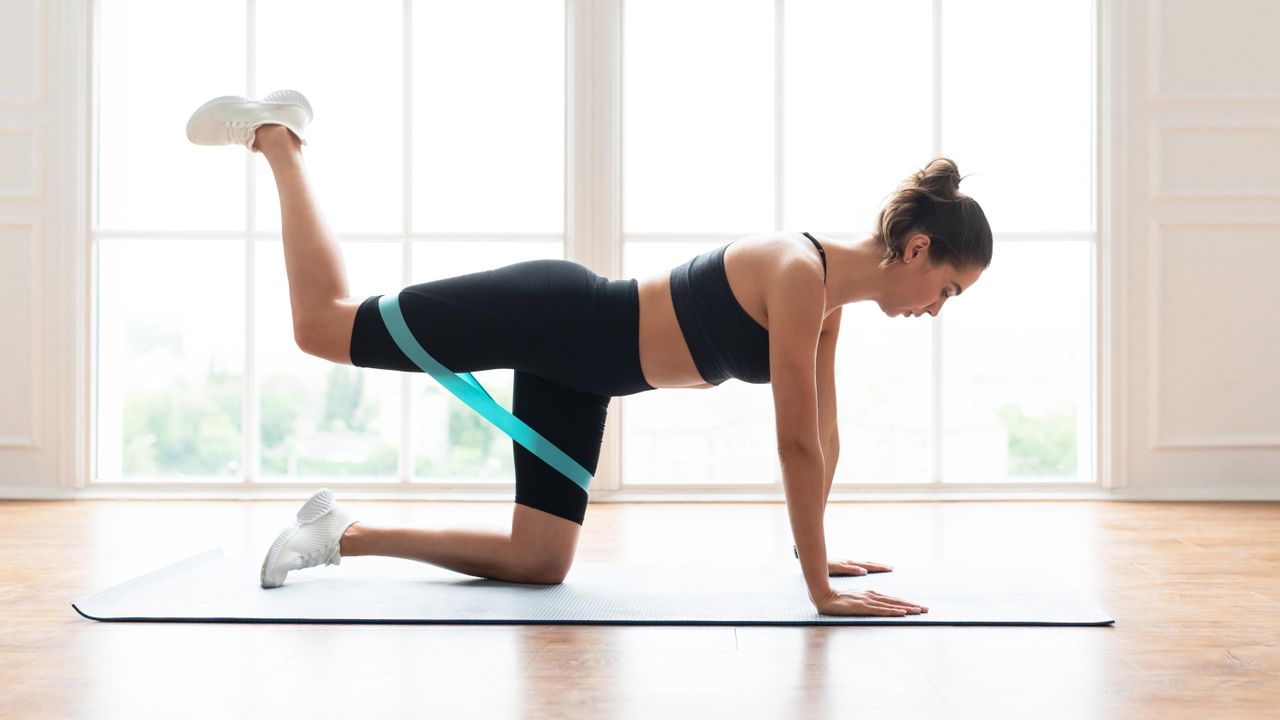Health
Personal Trainer Shares 5 Essential Exercises for Stronger Glutes

In the pursuit of stronger glutes, many fitness enthusiasts may overlook alternatives to traditional squats. A personal trainer has identified five effective exercises that specifically target the gluteal muscles, suggesting that these movements can lead to greater muscle growth and enhanced tone. These exercises not only aim to improve the appearance of the glutes but also strengthen the muscles that stabilize the hips and spine, contributing to better posture and reduced lower back pain.
Understanding the Gluteal Muscles
The glutes comprise several key muscles located at the back and sides of the pelvis: the gluteus maximus, gluteus medius, and gluteus minimus. Although not classified as a glute muscle, the tensor fasciae latae (TFL) is often included in discussions about this muscle group. Together, these muscles facilitate a range of lower-body movements, from simple leg swings to high-intensity sprinting.
Five Targeted Glute Exercises
Before beginning any new exercise routine, it is advisable to consult with a healthcare professional. Additionally, working with a certified personal trainer can provide valuable guidance, especially for those new to fitness. The following exercises can be performed for three sets of 12-15 repetitions, with the option to add weights or resistance bands for increased challenge.
1. **Donkey Kicks**: Begin on all fours, ensuring the spine remains neutral. Engage the core and lift the left leg, squeezing the left glute until the thigh is parallel to the floor. Lower back to the starting position and repeat for the desired number of repetitions before switching to the right leg.
2. **Fire Hydrants**: While on all fours, keep the spine neutral and engage the core. Lift the left knee to the side, squeezing the left glute. Return to the starting position and repeat, then switch to the right side.
3. **Banded Lateral Walks**: Place a resistance band around the ankles and maintain a neutral spine. Step to the left, keeping the toes pointed forward, followed by the right foot. Continue stepping in this manner for the desired repetitions before reversing direction.
4. **Deficit Side-Lying Hip Abduction**: Lie on the right side on a weight bench or sturdy surface. Engage your core and lift the left leg slightly behind you, then lower it toward the floor. Squeeze the left hip to raise the leg back up, completing the set before switching sides.
5. **Good Mornings**: Stand tall with feet hip-width apart. Set the hips back, aiming the tailbone towards the wall, and bring the torso parallel to the ground. Squeeze the glutes to return to the starting position, continuing for the desired number of repetitions.
The exercises outlined target the gluteus maximus, medius, minimus, and TFL in distinct ways, facilitating muscle contractions against gravity or resistance. This targeted approach not only builds strength but also isolates the glutes, promoting increased muscle growth and improved tone.
Incorporating these exercises into a regular fitness routine can enhance overall leg strength while providing additional benefits for posture and back health. For those looking to develop their glutes without relying solely on squats, these alternative movements offer a compelling option.
-

 Technology5 months ago
Technology5 months agoDiscover the Top 10 Calorie Counting Apps of 2025
-

 Health2 months ago
Health2 months agoBella Hadid Shares Health Update After Treatment for Lyme Disease
-

 Health3 months ago
Health3 months agoErin Bates Shares Recovery Update Following Sepsis Complications
-

 Technology4 months ago
Technology4 months agoDiscover How to Reverse Image Search Using ChatGPT Effortlessly
-

 Technology1 month ago
Technology1 month agoDiscover 2025’s Top GPUs for Exceptional 4K Gaming Performance
-

 Technology2 months ago
Technology2 months agoElectric Moto Influencer Surronster Arrested in Tijuana
-

 Technology5 months ago
Technology5 months agoMeta Initiates $60B AI Data Center Expansion, Starting in Ohio
-

 Technology5 months ago
Technology5 months agoRecovering a Suspended TikTok Account: A Step-by-Step Guide
-

 Health4 months ago
Health4 months agoTested: Rab Firewall Mountain Jacket Survives Harsh Conditions
-

 Lifestyle5 months ago
Lifestyle5 months agoBelton Family Reunites After Daughter Survives Hill Country Floods
-

 Technology4 months ago
Technology4 months agoHarmonic Launches AI Chatbot App to Transform Mathematical Reasoning
-

 Technology3 months ago
Technology3 months agoUncovering the Top Five Most Challenging Motorcycles to Ride









